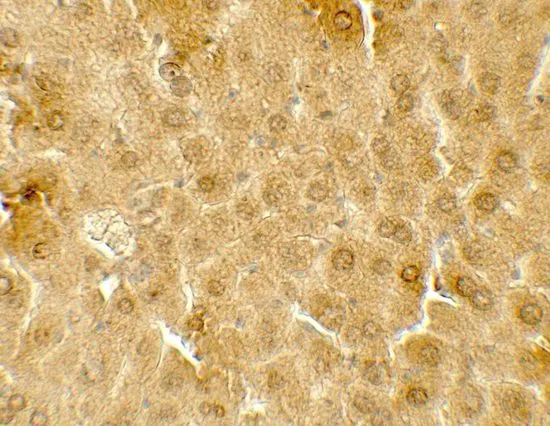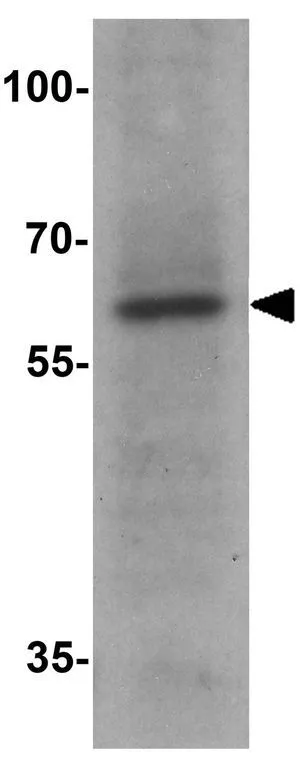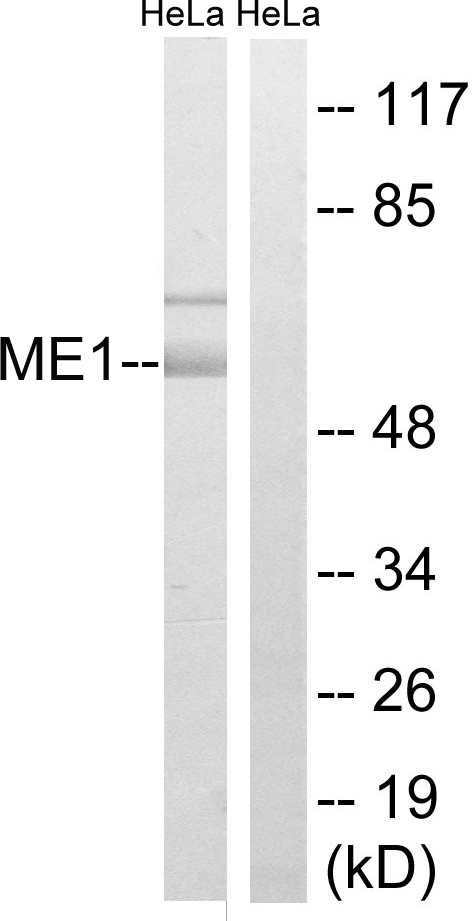
IHC-P analysis of mouse liver tissue using GTX31914 ME1 antibody. Working concentration : 5 microg/ml
ME1 antibody
GTX31914
ApplicationsWestern Blot, ELISA, ImmunoHistoChemistry, ImmunoHistoChemistry Paraffin
Product group Antibodies
TargetME1
Overview
- SupplierGeneTex
- Product NameME1 antibody
- Delivery Days Customer9
- Application Supplier NoteWB: 1 - 2 microg/mL. IHC-P: 5 microg/mL. *Optimal dilutions/concentrations should be determined by the researcher.Not tested in other applications.
- ApplicationsWestern Blot, ELISA, ImmunoHistoChemistry, ImmunoHistoChemistry Paraffin
- CertificationResearch Use Only
- ClonalityPolyclonal
- Concentration1 mg/ml
- ConjugateUnconjugated
- Gene ID4199
- Target nameME1
- Target descriptionmalic enzyme 1
- Target synonymsHUMNDME, MES, NADP-dependent malic enzyme, Malic enzyme, cytoplasmic, NADP-ME, malate dehydrogenase (oxaloacetate-decarboxylating) (NADP(+)), malic enzyme 1, NADP(+)-dependent, cytosolic, malic enzyme 1, soluble, pyruvic-malic carboxylase
- HostRabbit
- IsotypeIgG
- Protein IDP48163
- Protein NameNADP-dependent malic enzyme
- Scientific DescriptionThis gene encodes a cytosolic, NADP-dependent enzyme that generates NADPH for fatty acid biosynthesis. The activity of this enzyme, the reversible oxidative decarboxylation of malate, links the glycolytic and citric acid cycles. The regulation of expression for this gene is complex. Increased expression can result from elevated levels of thyroid hormones or by higher proportions of carbohydrates in the diet. [provided by RefSeq, Jul 2008]
- Storage Instruction-20°C or -80°C,2°C to 8°C
- UNSPSC12352203




